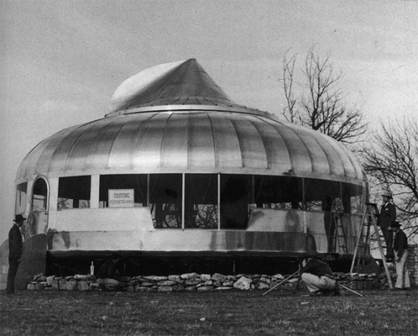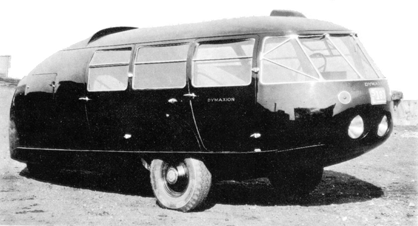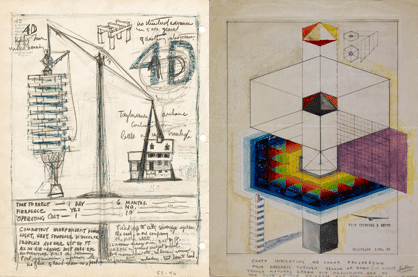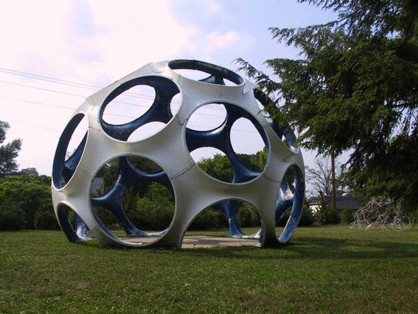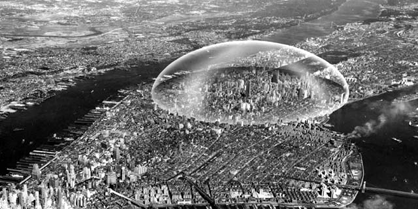Starting with The Universe
Texte par NoéMie Schwaller
Zürich, Suisse
12.09.08
Buckminster Fuller’s work at the Whitney Museum of American Art
Buckminster Fuller (1895-1983) was one of the great American visionaries of the 20th century. Best-known as the inventor of the geodesic dome, Fuller devoted much of his life to resolving the gap between the sciences and the humanities, which he believed was preventing society from taking a comprehensive view of the world. His theories and innovations traversed the worlds of architecture, visual art, literature, mathematics, molecular biology, and environmental science and have had a deep impact on all of those fields.
Buckminster Fuller endeavoured to see what he might do to benefit the largest segment of humanity while consuming the minimum of the earth‘s resources. Doing «more with less» was his credo. He described himself as a «comprehensive anticipatory design scientist,» setting forth to solve the escalating challenges that faced humanity before they became insurmountable.
Much of his time he spent working with students to convert his increasingly complex mathematical explorations - what he called «energetic-synergetic geometry» - into diagrams and physical models. The use of models to help conceptualize material and immaterial forces is a primary characteristic of Fuller‘s thought.
«With the highest aeronautical engineering facilities of the world redirected from weaponry to livingry production, all humanity would have the option of becoming enduringly successfull.» Harnessing the positive potential of new technology for the greater good was a key aspect of Fuller‘s outlook.
During the 1930‘s, Fuller refined his housing proposals while also expanded his «comprehensive anticipatory design» efforts to address other aspects of daily life. He proposed improvements for various utilities, appliances, furnishings, and equipment, bestowing many of them with his trademark name Dymaxion.
Fuller‘s innovative theories and designs addressed fields ranging from architecture, the visual arts, and literature to mathematics, engineering, and sustainability. He refused to treat these divers spheres as specialized areas of investigation because it inhabited his ability to think intuitively, independently, and, in his words, «comprehensively». Although Fuller believed in utilizing the latest technology, much of his work developed from his inquiry into «how nature builds». As the many drawings and models in this exhibition attest, Fuller was committed to the physical exploration and visual presentation of his ideas.
4D Tower: Time Interval 1 Meter, 1928 / Comparison of Lightful Houses and Traditional Homes, 1928
His anti-establishment approach made him and his geodestic dome icons of the counter-cultural revolution of the 1960‘s and 1970‘s. Fuller has often been called an utopian thinker, yet it is important to note that he was not overly optimistic about the future. Fuller thought to inspire people with his ideas for an abundant and equitable future - a vision he felt was absoltely attainable. But he placed the ultimate responsibility for achieving that goal on us all.
This is the first major exhibition of Buckminster Fuller’s work in the U.S. since the late 1970s. It offers a fresh look at Fuller‘s life‘s work for everyone who shares his sense of urgency about homelessness, poverty, diminishing natural resources, and the future of our planet.
Co-curated by K. Michael Hays, Adjunct Curator of Architecture at the Whitney and Professor of Architectural Theory at Harvard University, and Dana Miller, Associate Curator.
Public Program:
Buckminster Fuller Symposium in conjunction with Buckminster Fuller: Starting with The Universe.
September 12 - 13, 2008
The Greater Hall of The Cooper Union
7 East 7th Street at Astor Place
An architectural model of the Dymaxion House can also be seen at the exhibition «Home Delivery», Museum of Modern Art NYC

An architectural model of the Dymaxion House can also be seen at the exhibition «Home Delivery», Museum of Modern Art NYC
׫Our beds are empty two-thirds of the time. Our living rooms are empty seven-eights of the time. Our office buildings are empty one-half of the time. It‘s time we gave this some thought.» - Buckminster Fuller (I Seem to be a Verb, 1970)
